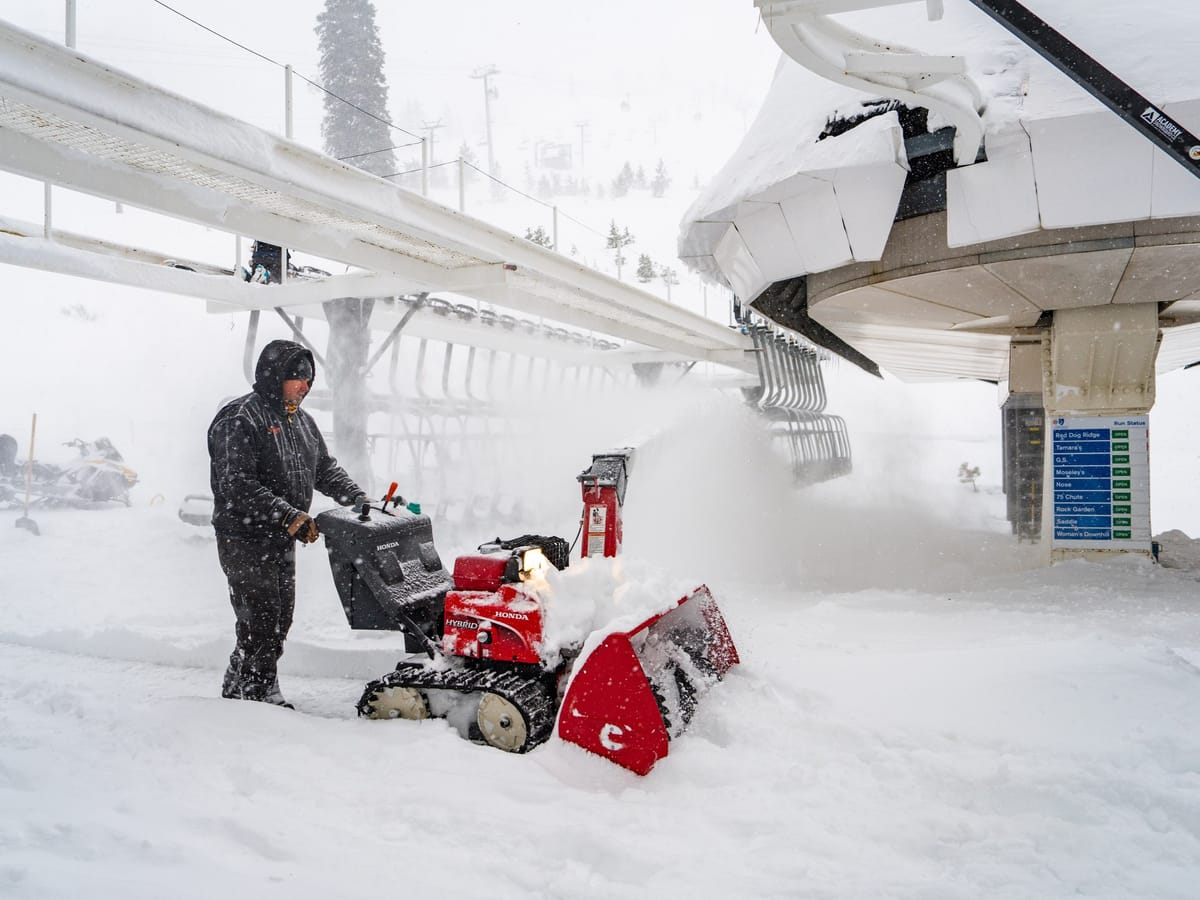US 23-24 Season Snowfall Total 10% Below 10 Year Average
In 23-24 season data, America's National Ski Areas Association reports average snowfall totalled 158” (401cm), 10% below the 10-year average and well below 22-23’s 225” (571cm) average. But business totals were still the 5th best ever.

In its data published for the 23-24 season, The National Ski Areas Association (NSAA), which represents most US ski areas, reported average snowfall at ski areas totalled 158” (401cm). This was nearly 10% below the 10-year average of approximately 173” (439cm) and well below 22-23’s 225” (571cm) average, which was a record snowfall season for several ski areas.
The start of the 2023-24 snowsports season was met with unseasonably warm temperatures, leading to a delayed start in many regions of the country. However late winter and spring snowstorms brought many areas back close to their seasonal averages in the end.
Historically, fluctuations in skier visit numbers could be correlated with snowfall; more snow generally meant more skier visits. The lower snow totals led to an average length of season of 106 days, a decrease of seven days from the previous season, which the NSAA said in a statement on the results was, “…a testament to the importance of snowmaking in a below-average snow year,” continuing, “This season, a slightly below-average snowfall season still yielded a skier visit number that would have been considered high in a normal year prior to the pandemic.”
The NSAA rated 23-24 the 5th best overall despite weather challenges, with preliminary skier visit numbers totalling 60.4 million. This organisation has been tracking skier visits since the 1978-79 season.
The skier visit number is a perennial key performance indicator for the downhill snowsports industry. A skier visit is a measure of frequency recorded every time an individual uses a lift ticket or pass at a ski area.
“Some ski area operators described the season as a roller coaster, and I applaud those same operators for being flexible, reopening to take advantage of a late season storm or making snow in late March to squeeze in one more week,” said Kelly Pawlak, NSAA president and CEO, “Skiers are a hardy bunch and responded enthusiastically. The strong skier visits speak volumes to their passion for sliding on snow,” she said.
The NSAA divides the US into six ski regions. While performance remained strong in several regions, all six regions experienced a decline in skier visits against last season’s unparalleled numbers. The Rocky Mountain region remains the most visited, reporting 26.7 million skier visits, followed by the Northeast at 12.4 million and the Pacific Southwest at 8.0 million. The Midwest was the fourth-most visited region, tallying 4.8 million visits despite also reporting the biggest year on year decrease (26.7%). The Pacific Northwest region reported 4.2 million visits. The Southeast reported 4.2 million and had the least change year over year.




